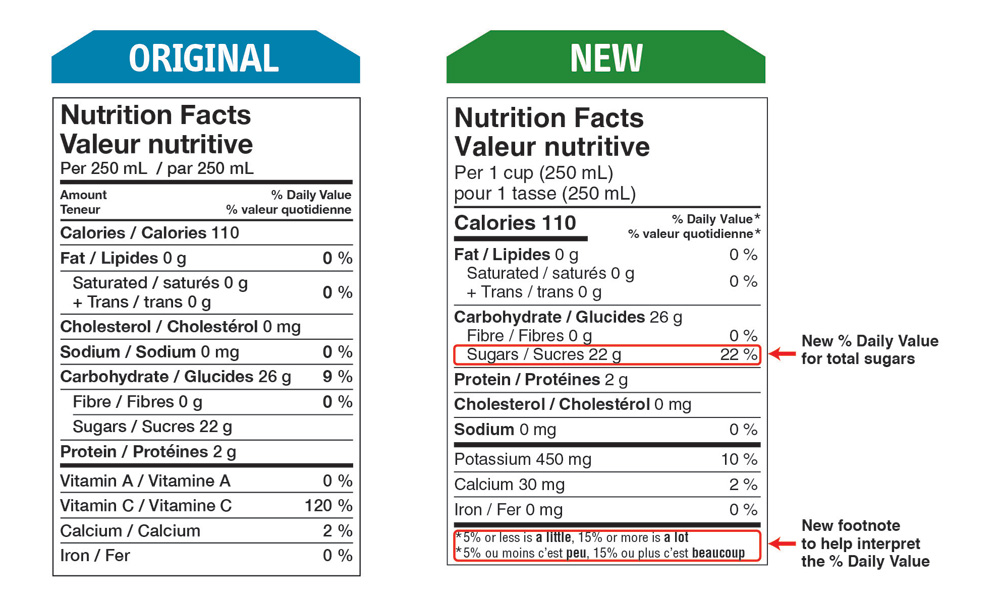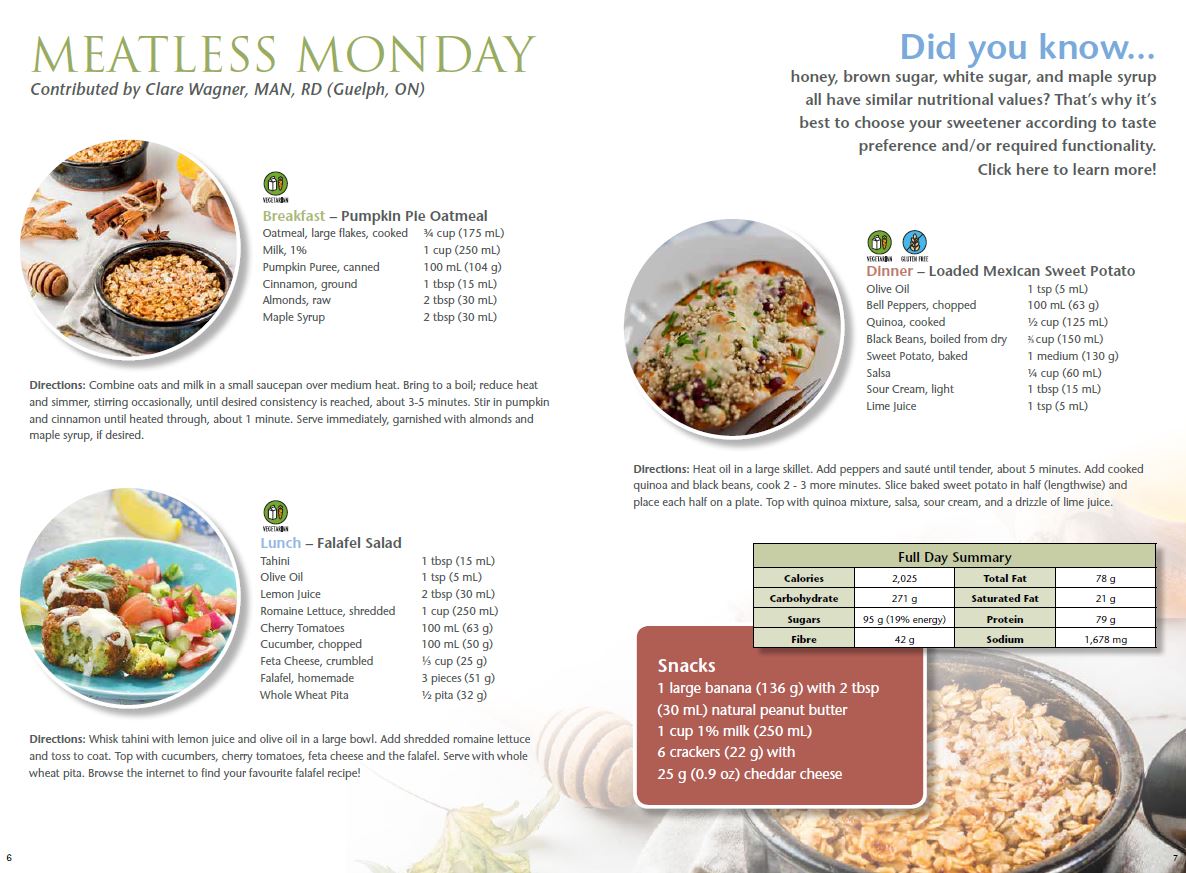Whats New
New Resource: The Sweet Spot Challenge - A Compilation of Daily Menus Based on the 100 g Daily Value for Sugars
Background on Sugars Labelling
Did you know? The Canadian government is making several important changes to the Nutrition Facts table and List of Ingredients on food labels. The food industry has until 2022 to make these changes , however you may be seeing these new food labels appear on certain products right now!
A cornerstone of these changes to food labelling is providing additional information on sugars, including the addition of a Daily Value for total sugars in the Nutrition Facts table.
- Total sugars includes sugars found in fruits, vegetables, and milk products, as well as sugars that are added to foods (e.g. sugar, brown sugar, glucose-fructose (i.e. high fructose corn syrup), honey, maple syrup, concentrated fruit juice)
- The Daily Value of 100 grams total sugars is based on 20% of a 2,000 Calorie diet. According to Health Canada, "this value is not a recommended level of intake. Instead it is the amount of total sugars that is consistent with a healthy eating pattern. That is, a diet where sugars come mostly from fruit, vegetables, and plain milk".1
- The % Daily Value for total sugars has been included to help consumers
- Compare the sugars content per serving of different foods, and
- Understand the relative amount of sugars in the context of total daily consumption.
1www.canada.ca/en/health-canada/services/nutrients/sugars.html

Compilation of Daily Menus Based on the 100 gram Daily Value for Sugars
We, the dietitians at the Canadian Sugar Institute, realize that introducing a Daily Value for sugars will impact the way consumers understand food labels and may introduce some confusion and questions. For example, can their favourite foods still fit?
That’s why we put a call out across the country to participate in the Sweet Spot Challenge, to find out what this new 100 gram Daily Value for total sugars (both naturally occurring and added) looks like for Canadians, who all have different eating habits.
Dietitians, dietetic students, and nutrition professionals were asked to create an example one-day menu plan that incorporates the new 100 gram Daily Value for total sugars as part of a 2,000 Calorie diet (or the equivalent of 20% of daily calories if total energy was higher or lower than 2,000 Calories).
Participants were asked to include a variety of foods and beverages, to be mindful of general recommendations to limit sodium and saturated fats, and to consider different consumers’ dietary habits and lifestyles. For example, what might 100 grams of sugars look like for a 9-5’er, a young athlete, or an older adult?
We’ve compiled all the submissions into an e-booklet, now available to download, to share a wide variety of visual samples of what 100 grams of sugars per day can look like as part of a 2,000 Calorie meal plan! An example can be seen below:
If you feel inspired, you can download the instruction booklet to create your own sample one-day meal plan. If you do, please share it with Chiara DiAngelo, MPH, RD at: cdiangelo@sugar.ca and we can continue to expand this compilation of daily menus.




